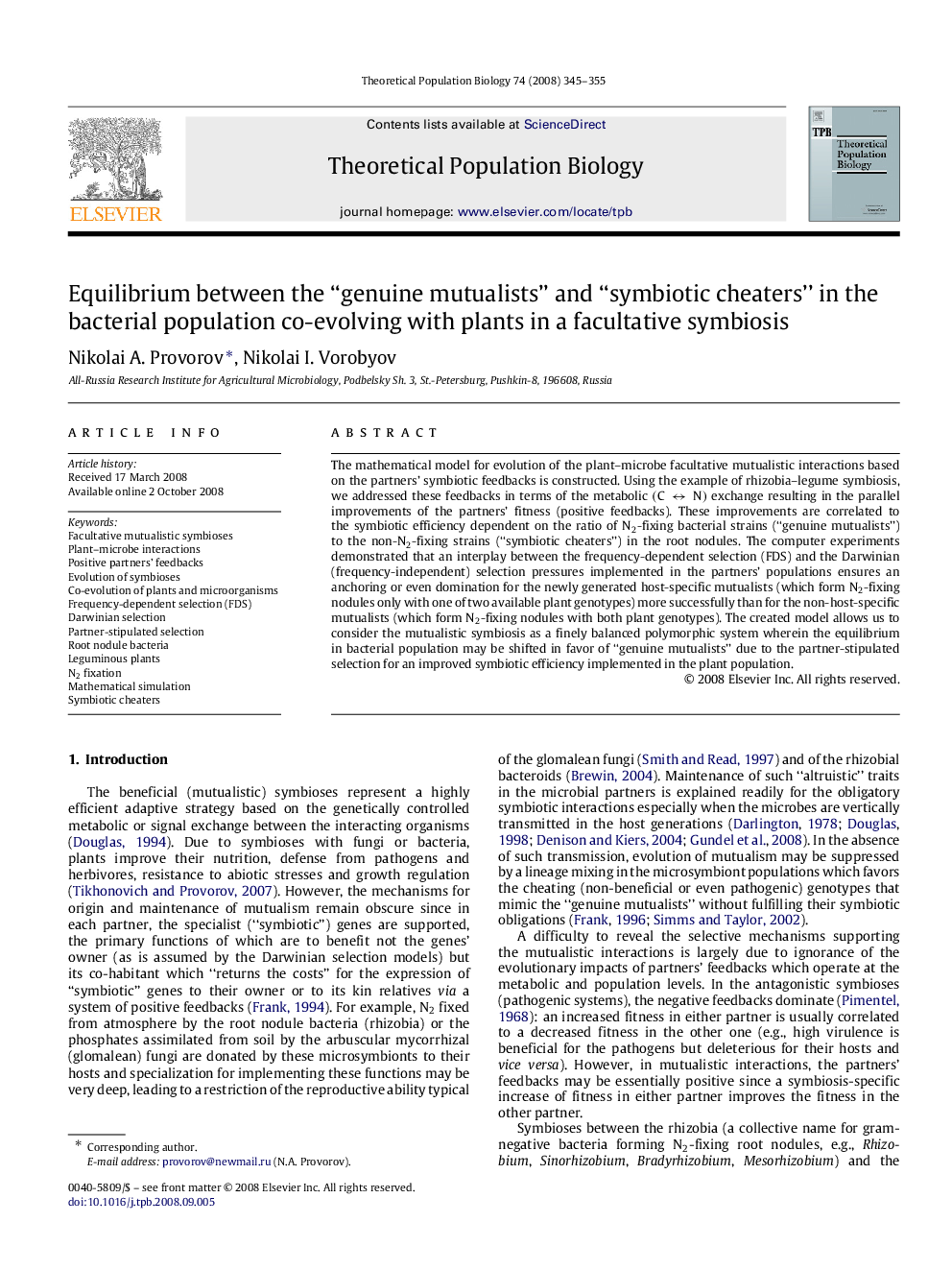| Article ID | Journal | Published Year | Pages | File Type |
|---|---|---|---|---|
| 4502588 | Theoretical Population Biology | 2008 | 11 Pages |
Abstract
The mathematical model for evolution of the plant-microbe facultative mutualistic interactions based on the partners' symbiotic feedbacks is constructed. Using the example of rhizobia-legume symbiosis, we addressed these feedbacks in terms of the metabolic (CâN) exchange resulting in the parallel improvements of the partners' fitness (positive feedbacks). These improvements are correlated to the symbiotic efficiency dependent on the ratio of N2-fixing bacterial strains (“genuine mutualists”) to the non- N2-fixing strains (“symbiotic cheaters”) in the root nodules. The computer experiments demonstrated that an interplay between the frequency-dependent selection (FDS) and the Darwinian (frequency-independent) selection pressures implemented in the partners' populations ensures an anchoring or even domination for the newly generated host-specific mutualists (which form N2-fixing nodules only with one of two available plant genotypes) more successfully than for the non-host-specific mutualists (which form N2-fixing nodules with both plant genotypes). The created model allows us to consider the mutualistic symbiosis as a finely balanced polymorphic system wherein the equilibrium in bacterial population may be shifted in favor of “genuine mutualists” due to the partner-stipulated selection for an improved symbiotic efficiency implemented in the plant population.
Keywords
Related Topics
Life Sciences
Agricultural and Biological Sciences
Agricultural and Biological Sciences (General)
Authors
Nikolai A. Provorov, Nikolai I. Vorobyov,
